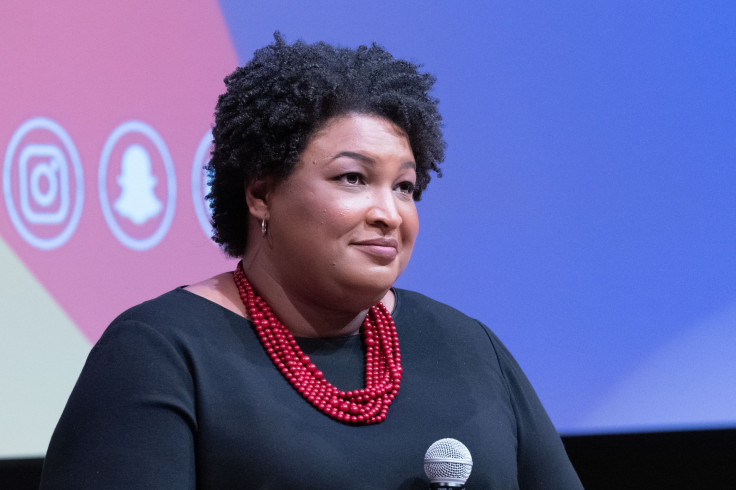3 Ways Stacey Abrams Helped Georgia Become A Crucial Swing State
KEY POINTS
- Stacey Abrams ran for governor in Georgia in 2018. She lost, but her efforts to galvanize disenfranchised communities and expose voter suppression laid the groundwork for future efforts
- After her loss, she started a new organization registering hundreds of thousands of new voters and fighting against the laws suppressing Democratic votes
- She toured the landscape of the Democratic presidential primary, convincing officials and candidates that Georgia was very much up for grabs. Today Georgia is too close to call
The idea of a Democratic presidential candidate winning Georgia seemed laughable in 2016. But in 2020, it looks like there’s a serious chance Georgia could join North Carolina on the list of Republican strongholds that now look decidedly purple.
As of Thursday evening, Georgia’s presidential race is still too close to call, and there’s one person who can take much of the credit for that: Stacey Abrams.
Abrams was Georgia’s House minority leader when she ran for governor in 2018. But Republican Brian Kemp, who was serving as secretary of state, managed to pull off a tight victory after reports of purging largely minority voters from registration rolls.
The purges were extensively documented by the Associated Press and other media outlets. Reports showed Kemp had walked back on policy promises and removed almost 1 million voters in the three years before the election. A law instituted months before the election purged a further 53,000.
Abrams never formally conceded, and today stands as one of the driving forces responsible for Georgia’s swing-state status.
Here are the top three ways she made Georgia competitive again.

Her Initial Run
Abrams’ gubernatorial run may have ended in failure, but along the way, she reenergized communities that had been disengaged from politics for years.
As a state representative, Abrams began a nonprofit called the New Georgia Project to register over 86,000 new voters. Her run proved to minority voters in Georgia that the state had the numbers to challenge Republican control if they could show up to the polls.
She garnered 1.2 million Black votes alone, more than the entire Democratic vote in 2014. Her voter drives across the state tripled Latino and Asian-American turnout, doubling the number of youth voters since the previous election
“The best way to defeat voter suppression,” she told USA Today, “is by having such a high turnout that the barriers to voting have limited effect."
Looking back, 2018 might not have been the bitter defeat it seemed at the time. Abrams later told voters: "We didn’t fail. In the state of Georgia, we transformed our electorate.”
Registering Voters After 2018
With plenty of time and even more public support, Abrams set about making sure that the next time Georgia was in play it would be a fair fight.
Toward that goal, she started Fair Fight. The organization built on her experience with the New Georgia Project, raising voting rights to new heights. It registered a staggering 800,000 new voters and fought against the laws that had turned voters away from the polls in 2018. In fundraising alone, Fair Fight contributed $32 million to Democratic challengers.

“What we are excited about is that 45% of those new voters are under the age of 30,” she told NPR. “Forty-nine percent are people of color. And all 800,000 came on the rolls after November 2018, which means these are voters who weren't eligible to vote for me but are eligible to participate in this upcoming election.”
And just like that, Georgia was a swing state.
Convincing Democrats To Give Georgia A Chance
As dozens of politicians were jockeying for position in the early stages of the Democratic presidential primary, Abrams was running her own campaign: convincing party officials that Georgia was worth fighting for.
“Back in 2019, I met with every major candidate who was running for president and I had two messages,” she told Politico. “One, voter suppression is real and it’s one of the reasons that we lost across the country. But two, Georgia is a competitive state and it would be malpractice to not pay attention. Luckily both of those messages broke through.”
Abrams and her allies literally wrote the playbook on Georgia -- 16 pages of data aimed at showing how Georgia was changing. More people were moving to the state and the new residents were almost twice as likely to vote Democrat as Republican.
She evidently was convincing. The Biden campaign sent Kamala Harris’ husband Doug Emhoff, then Jill Biden, then Harris herself, then Joe Biden and Barack Obama. Georgia still hasn’t been called, but the state likely would not be competitive without Adams.
© Copyright IBTimes 2025. All rights reserved.



















